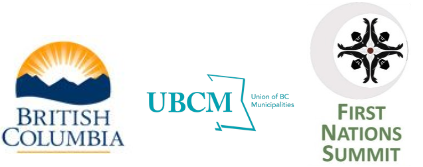CivicInfo Library
Joint Indigenous and Local Government Initiatives and Relations
| A collection of resources related to initiatives, agreements, arrangements, partnerships, and the provision of services between Indigenous governments and organizations, and local governments in British Columbia. |  Service Partner |
< Previous Resource 11 of 14 Next >
Beacon Hill Park Longhouse - Esquimalt and Songhees Nations
Publisher: Victoria, City of
Author: Victoria, City of
Subject(s):
Posting Date: January 7, 2016
Year Published: 2016
Abstract:
First Nations Longhouse The building at the top of Beacon Hill, known as Checkers Pavilion, will be taken down in November 2016. The site will be prepared for a First Nations longhouse to be built in the future.
For thousands of years Beacon Hill has been a place of cultural significance to the Lekwungen People. The City of Victoria has adopted 2017 as a Year of Reconciliation, and has committed a portion of the hilltop to the Esquimalt and Songhees Nations to build a traditional longhouse. The longhouse will be used for cultural and educational activities.
Checkers Pavilion was a lookout and recreational building, but it has not been in use since the 1970s.
History
For thousands of years, Beacon Hill has been a place of historical, cultural and sacred significance to the Lekwungen People (now known as Esquimalt Nation and Songhees Nation). The Lekwungen People's activities of cultivating camas and other native plants for food helped to shape the landscape of this area.
Beacon Hill Park is considered to be 'archaeologically significant' because of this rich First Nations history. With the guidance and support of the Esquimalt and Songhees Nations, an existing ancient First Nations burial ground on the southeast slope of Beacon Hill Park has been identified as special place to re-bury First Nations remains.
Beacon Hill Park was formalized in 1882, when the Province of British Columbia granted 75 hectares to the City of Victoria to be held in trust. Beacon Hill Park defines the very essence of Victoria and was designated a municipal heritage site in 2009.
For thousands of years Beacon Hill has been a place of cultural significance to the Lekwungen People. The City of Victoria has adopted 2017 as a Year of Reconciliation, and has committed a portion of the hilltop to the Esquimalt and Songhees Nations to build a traditional longhouse. The longhouse will be used for cultural and educational activities.
Checkers Pavilion was a lookout and recreational building, but it has not been in use since the 1970s.
History
For thousands of years, Beacon Hill has been a place of historical, cultural and sacred significance to the Lekwungen People (now known as Esquimalt Nation and Songhees Nation). The Lekwungen People's activities of cultivating camas and other native plants for food helped to shape the landscape of this area.
Beacon Hill Park is considered to be 'archaeologically significant' because of this rich First Nations history. With the guidance and support of the Esquimalt and Songhees Nations, an existing ancient First Nations burial ground on the southeast slope of Beacon Hill Park has been identified as special place to re-bury First Nations remains.
Beacon Hill Park was formalized in 1882, when the Province of British Columbia granted 75 hectares to the City of Victoria to be held in trust. Beacon Hill Park defines the very essence of Victoria and was designated a municipal heritage site in 2009.
Local Government(s):
First Nation(s):
Full Text Word Count: 1351